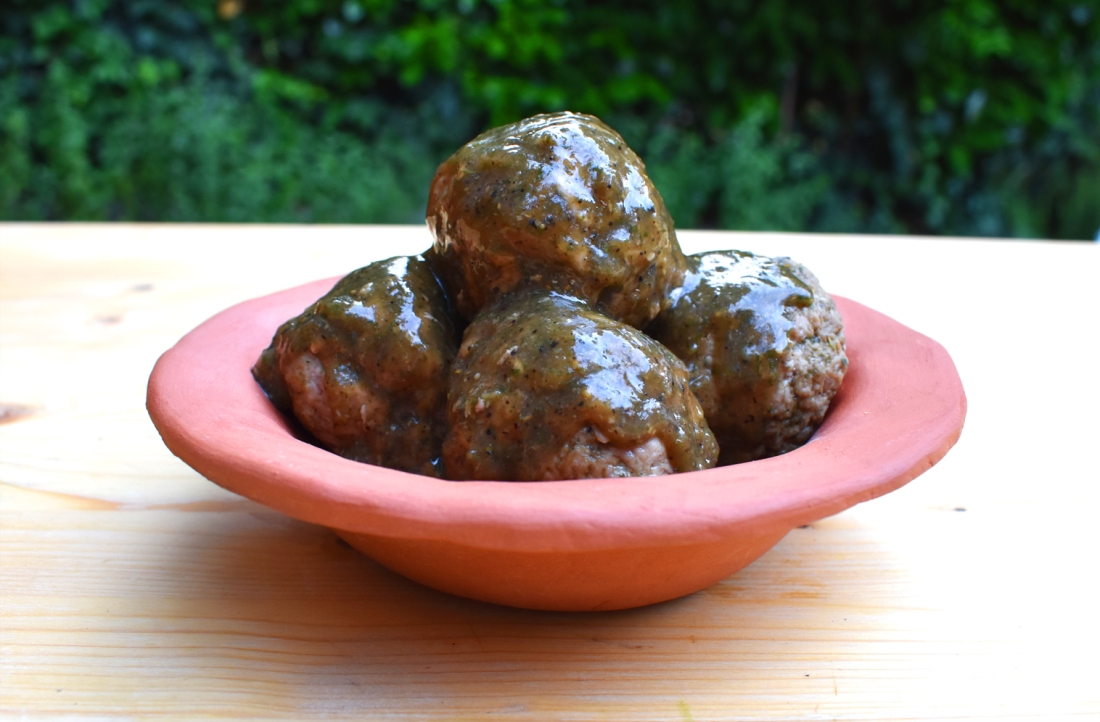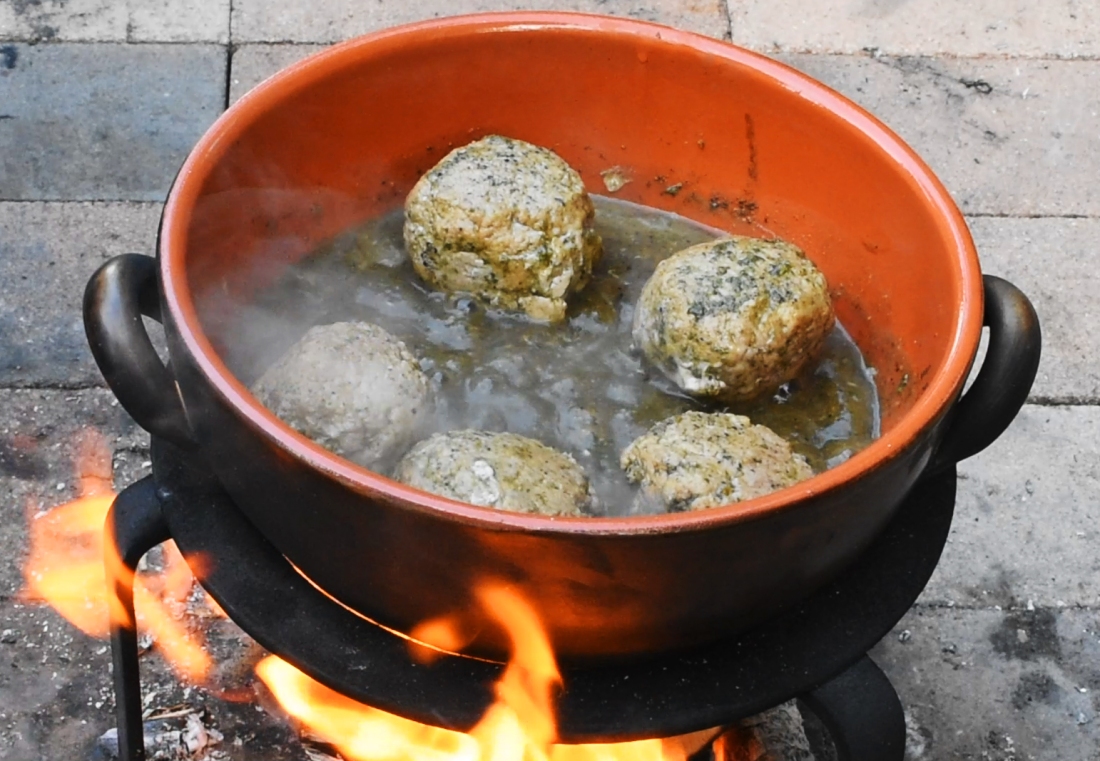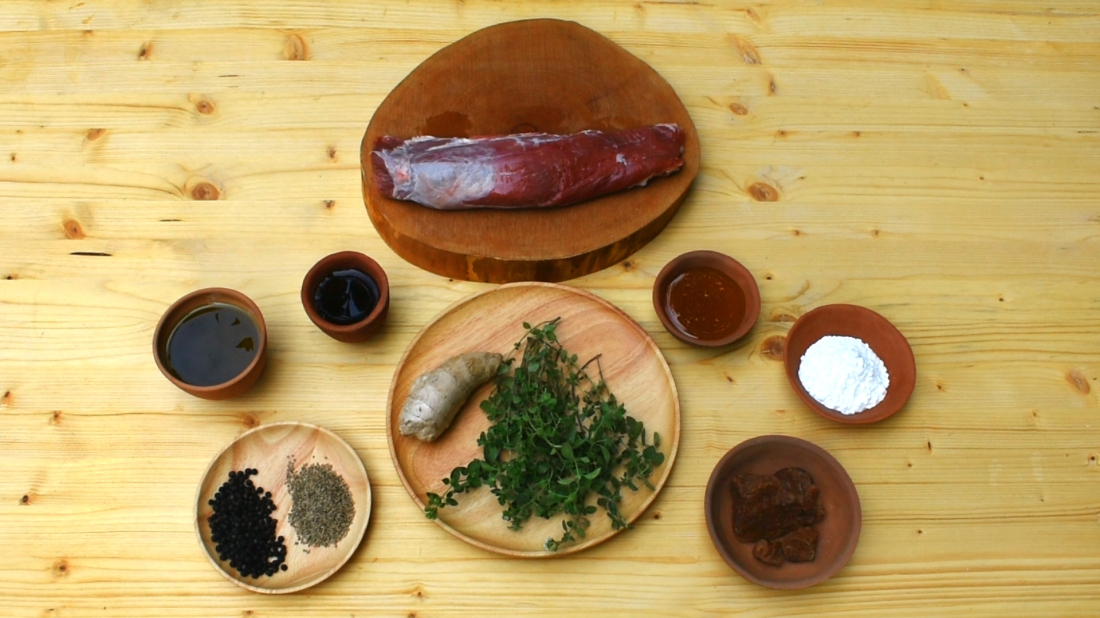Made with various kinds of meat and seafood, isicia were a quite common dish in ancient Rome, sometimes served alone with a sauce or a mix of spices and other times used as ingredients for other courses. In the cookbook attributed to Marcus Gavius Apicius, De Re Coquinaria, there are many recipes of isicia (that can be translated as meatballs) and sausages. A few weeks ago, we prepared the sausage called lucanica. Now, we present delicious meatballs prepared with pork and cooked in a sauce thickened with starch: isicia amulata. We chose pork, but you can use the meat you prefer. In his cookbook, Apicius talks about isicia made with any kind of meat: pork, chicken, rabbit, but also peacock and pheasant.
We suggest pairing it with barley polenta, fava beans, lettuce salad, or taro.
Below, you will find the original recipe with the translation into English and a note about the ingredients. Enjoy!
Ingredients
pork tenderloin
garum
extra virgin olive oil
honey
wheat starch
spices (asafoetida, black pepper, lovage, ginger)
oregano
Method
Mince the meat. Grind the black pepper in the mortar and mix it with the meat adding a little garum and olive oil, then form the meatballs with the mixture.
To prepare the sauce, grind in the mortar black pepper and lovage. Grate a little asafoetida and mix it with the other spices. Now you can mince ginger and oregano, then add them in the mortar and pound well. Add a little honey and garum mixing everything together.
Pour the sauce in a pan diluting with a bit of water. When it starts to boil, add the meatballs and cook for a few minutes. Add the wheat starch diluted with water and let the sauce thicken. Serve the meatballs coated with the sauce.
Note about the ingredients
Garum was an ancient fermented fish sauce, widely used by all Mediterranean populations, in particular, Romans, Greeks, and Phoenicians. Recipes of garum survived thanks to Greek and Latin historical sources, so we know exactly how ancient garum was made. There are simpler recipes in which garum is prepared just with salt and fish, and more complex ones that require many spices and aromatic herbs. There are modern-day South-East Asian fish sauces prepared in the same way as the more simple kind of garum. You can use one of them to substitute garum, if you don’t find it, or use just a pinch of salt.
Asafoetida is the Parthian variety of silfium or laser, widely used by Greeks, Romans, and other ancient populations. While the most costly and priced variety, laser cyrenaicum, is no longer produced today, asafoetida continues to be a common spice in many countries. Its flavor is intense and strong; we suggest using a little quantity not to overpower the other ingredients.
While lovage is a Mediterranean spice, one of the favorites of Apicius, we find in many recipes also pepper and ginger. We chose black pepper, but ancient Romans, as Pliny writes, knew also the white and the long varieties, exported from India, while ginger arrived at Rome from Arabia and Troglodytica.
To prepare the basic recipe of meatballs, not present in the recipe of the isicia amulata, we used another recipe, isicia de pullo: the author write that we have to shape meatballs mixing the meat with oil, garum, and pepper. He gives us the amount of the ingredient, but we changed the ratio to adjust the mixture to the quantity of meatballs we were preparing: a pound of extra virgin olive oil (olei floris libram I), a quarter of a sextarium of garum (liquaminis quartarium), and half an ounce of pepper (piperis semunciam).
Original text
Isicia amulata ab aheno sic facies: teres piper, ligusticum, origanum, modicum silfi, zingiber minimum, mellis modicum; liquamine temperabis, misces; adicies super isicia, facies ut ferveat. cum bene bullierit, amulo obligas spisso, et sorbendum inferes.
Translation
To prepare meatball with starch cooked in a pan: grind black pepper, lovage, oregano, a moderate quantity of silfium, very little ginger, a bit of honey. Dilute with garum and mix. Pour the sauce over the isicia and make them boil. When it boils well, thicken with starch and serve.
Recipes
Ancient Roman Lettuce Salad with Oxyporum VIDEO
Ancient Roman Cuttlefish Cakes VIDEO
Ancient Roman Bonito VIDEO
Ancient Roman Pork Stew VIDEO
Ancient Roman Sausage VIDEO
Ancient Roman Chicken VIDEO
Ancient Roman Barley Polenta VIDEO
Ancient Roman Farmer’s Meal – Flatbread and Moretum VIDEO
Ancient Roman Poached Eggs VIDEO
Ancient Roman Stew VIDEO
Ancient Roman Sea Bass VIDEO
Ancient Roman Stuffed Dates VIDEO
Ancient Roman Mussels VIDEO
Ancient Roman Taro VIDEO
Ancient Roman Guinea Fowl VIDEO
Ancient Roman Fava Beans VIDEO


